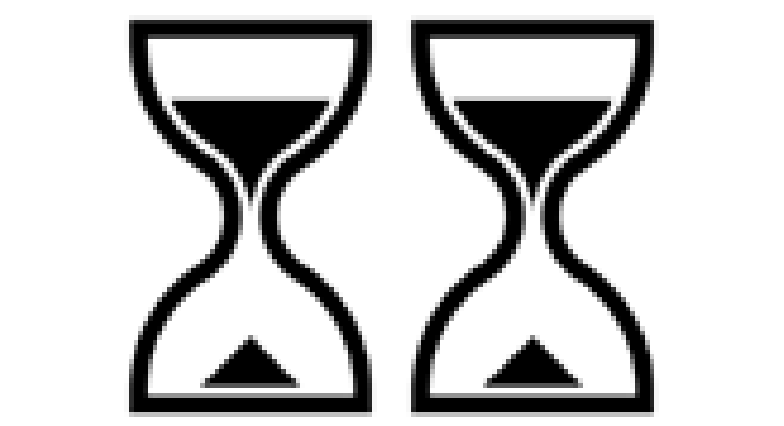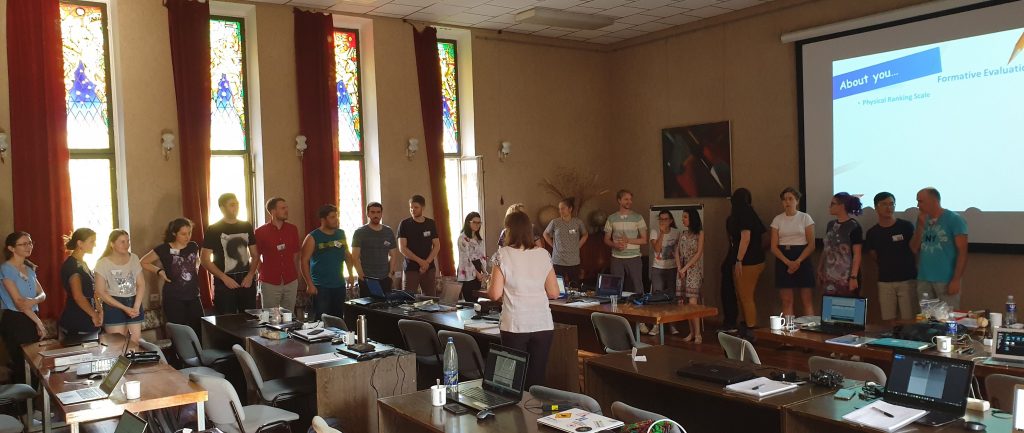Evaluation tool 1 – Physical ranking scales
What is this tool?
Physical ranking scales involve participants physically standing along a line representing different levels of experience / attitude etc (any ranking type question can be asked).
This gets everyone moving and raises the energy in the room, and also allows for interaction and discussion as the participants try to place themselves in relation to others around them.
It is a very energetic approach, though it can be difficult to quantify.
What can I use it for?
Physical ranking scales are particularly effective for use in with primary and secondary school students, but can also be used with interested adults or general public groups.
Physical ranking scales at a glance…
| Who: |  |  |  |  | |
| What: |  | ||||
| Data: |  |  | |||
| Time: |  |  |  | ||
| Gain: |  |  | |||
| GLOs: |  |  |  |  |  |
When should I use it?
This tool is best suited to use during an event.
What do I need?
Your participants and space in the room for them to move about!
Let’s get started…
Explain to your participants what is going to happen before they start moving, otherwise things can get very chaotic very quickly! Indicate an imaginary scale within the room (between two walls is usually best, but anywhere with a reasonably long space is good). Ask your par- ticipants to physically arrange themselves along that line according to the question asked. For groups that are new to each other, but will be working together extensively, it’s often useful to begin with a simple question that everyone can answer easily, for example “How far have you travelled to get here?”, with a scale running from “Closest” to “Furthest away”.
You can then move to more complicated / in-depth questions, for example, the line might go from “Expert” to “Beginner”, with the question “How confident are you in programming skills?” Or from “Strongly agree” to “Strongly disagree”, with the question “Do you believe there is life on other planets?”
Encourage your participants to speak to each other in order to better judge where they should be on the line – it’s great as an icebreaker at the start of the session to encourage people to get to know each other a little better, as well as providing information to you.

Once they are arranged in a rough line (you may need to hustle them to finish deciding where to stand) you can ask certain individuals (at different points along the line) to briefly share why they placed themselves where they did. Repeat this with a few other brief relevant questions – these could be topic related or more general. Depending how much discussion you include, around three questions is usually enough.
OK, what do I do with my data now?
The combination of the ranking scales with the brief discussions helps you understand participants’ opinions and experiences, and allows you to respond to any misconceptions or comments that people might have. It also helps participants understand who else is in the room, what sort of background/skills they have, and gives you a chance to emphasise that diversity is welcome, and that everyone has something to contribute.
Similar techniques
You can repeat the exercise at the end of the session to help identify any shifts in attitudes or confidence (and even take photos of the group before and after for easier comparison if they give permission).
Yes, no, maybe runaround – This is an active way of collecting children’s opinions. You will need three large pieces of paper with a smiley face on one, a sad face on the second and an unsure face on the third. Position the pieces of paper around the room and shout out your question. Ask children to run/hop/skip/ walk/tip toe/jump etc to their preferred answer. You will need someone to record how many children went to yes, no, maybe. Add in some fun questions too!
With thanks to Sheffield City Council for the ‘Yes, no, maybe runaround’ technique.
Download worksheet
Go to the Physical ranking scales tool worksheet
Back to Tools

